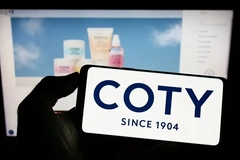Essential oils in focus: EU Commission provides CLP Regulation update as SMEs fear financial strain

21 Jul 2023 --- With the European Commission’s (EC) proposed revision of the Classification, Labeling and Packaging (CLP) Regulation, Personal Care Insights speaks to the governing body about how this may impact essential oils. Small and medium enterprises (SME) are concerned that new hazard classifications and rules under the revision will result in burdening costs for fragrances and cosmetics testing and labeling.
In addition, the European Environmental Bureau (EEB), Chemsec, Health and Environment Alliance (HEAL) and ChemTrust jointly bring clarity on the classification of essential oils, which appears to be “suffering from miscommunication and disinformation.”
“In the proposed revision of the CLP Regulation and the upcoming proposal for the revision of REACH (Registration, Evaluation, Authorisation and Restriction of Chemicals) Regulation, the EC has no plans to change the definition of essential oils as chemical substances,” an EC spokesperson tells Personal Care Insights.
“For essential oils as well as other multi-constituent substances, there is also no intention to require the exhaustive hazard identification of all the components of a multi-component substance to derive a classification.”
“EC’s proposal contains similar rules for classifying multi-constituent substances (including essential oils) to those currently included in the ECHA guidance. Also, under EC’s proposal, exemptions to these rules are possible, under the condition that the scientific conditions are met.”
A “substance” means a chemical element and its compounds in the natural state or obtained by any manufacturing process.  According to the NGOs, several fragrance SMEs are worried about the CLP revisions impacting business costs.
According to the NGOs, several fragrance SMEs are worried about the CLP revisions impacting business costs.
Finalized this year?
The spokesperson shares with us that the EC has taken note of the Council mandate on the EC’s proposal for a regulation on the CLP of substances and mixtures.
“We are now awaiting the position of the European Parliament on this legislation proposal vote in the ENVI Committee in September, followed by a Plenary decision in October, to enter into final negotiations of the three institutions,” they continue.
“The objective would be to finalize the inter-institutional discussions by the end of the year, but this timing is tentative, as it depends on the speed of progress between the European Parliament and the Council.”
The EU aims to spearhead a safe and sustainable future via the Green Deal, under which the Chemicals Strategy for Sustainability is established as one of its pillars.
“The EU chemicals legislation aims to protect human health and the environment from the risks posed by hazardous chemical substances, whether from natural or industrial origin,” states the EC spokesperson.
Understanding essential oil classification
Chemicals in the EU are regulated in two phases – a “hazard/risk assessment” phase followed by a “risk management” (decision-making) phase. To clarify, “hazard” is judged by the intrinsic chemical properties and “risk” looks at hazard against exposure and possible adverse outcomes, outlines a parliament briefing.
“Essential oils are already regulated as chemicals under EU legislation (REACH), and all chemicals, including essential oils, should also be classified according to the CLP Regulation of chemicals. This means that where hazards are identified, such chemicals must also carry labels and warnings about the hazards they contain in compliance with CLP,” explains the spokesperson.
Essential oils are classified as substances with more than one constituent (MOCS). “The perspective of environmental and health NGOs” explains why MOCS must be classified adequately.
“For example, if a substance contains a carcinogenic ingredient above a specified concentration level, the whole substance should be classified as a carcinogen. This follows the same scientific principles applied for mixtures and should help prevent carcinogens and other very harmful chemicals in cosmetics and foodstuff,” the NGOs position paper reads. “Hazard” is judged by the intrinsic chemical properties and “risk” looks at hazard against exposure and possible adverse outcomes.
“Hazard” is judged by the intrinsic chemical properties and “risk” looks at hazard against exposure and possible adverse outcomes.
“Article 5.3 [within EC’s proposed CLP revision] does not mandate the classification of all essential oils or other substances of renewable biological origin; it applies only to substances containing hazardous ingredients like carcinogens, repro toxicants or endocrine disruptors.”
Addressing business concerns
The NGOs explain that ongoing negotiations of the CLP Regulation have resulted in the publication of several position papers rejecting ECs proposal, with worries for the fragrance and cosmetics business.
For instance, the International Federation of Essential Oils and Aroma Trades (IFEAT) says: “The revision of REACH under the CSS will impose dossier requirements for materials in the 1-10 metric tons/year category to adopt the same documentation and testing requirements as for products in the 10-100 metric tons/year band.”
“This represents a terrible burden for SME. In addition, new tests for endocrine disruption and other novel hazard classes under CLP would be required for the 1-10 MT/year volume band (and upwards). Such requirements could translate into additional costs of between €0.1 million to €0.4 million (US$0.12 million to US$0.45 million) per substance.
However, the NGOs flag that these papers “generally do not provide precise references to elements of the CLP regulation or the proposed revision text, yet they attract considerable attention.”
“Overall, their statements appear to revolve around the following elements: with the proposed new CLP, essential oils would have to be classified for hazards related to their constituents. This would put the related business at risk, although SMEs manufacture natural products and have been used for centuries,” they summarize in reference to IFEAT’s position.
The NGOs find the backlash to be “surprising” as essential oils (or any other substances) can currently be classified based on the properties of their constituents. Moreover, many essential oils are already classified for their hazards.
Prioritizing health safety
Worries about specific business impacts, according to the NGOs, “are not relevant to CLP as it is a communication tool” as opposed to a business tool.
“The hazards of essential oils notified in CLP and linked risks are corroborated by warnings given to pregnant women and parents, as well as by warnings on their labels,” they underscore.
“It is unclear why the position papers link classification and labeling to economic losses when correct labeling is common. Not warning users about known hazards and risks would certainly expose producers to impressive (economic) claims.”
By Venya Patel












